How to Change a Flat Tire
The only time we’re sad to see a donut
Have you ever finished up a long workday, only to get to the parking lot and discover you have a flat? What about mid-road-trip and your tire pops? No matter what caused it to happen, getting a flat tire can really flatline your day. Thankfully, putting on a spare can be an easy job. Ensure that your car is stocked with the proper tools and safety equipment, and you’ll be back on the road in no time.
Safety First
Flat tires don’t always happen in the comfort of your driveway or garage. Since it is likely you’ll be out and about when a flat occurs, it’s important to get to a safe location. Driving with a flat tire will damage your rims, which will be an even more expensive repair or replacement. You’ll be okay to go far or long enough to get yourself pulled over in a safe location, but don’t attempt to get home or to the garage with the flat. When you pull over, be sure to turn on your hazard lights, ensure the emergency brake is engaged, and place some reflective safety cones around the car. Most roadside emergency kits will have these reflective triangles or cones to help increase your visibility. If you have a reflective safety vest, put that on as well.

Equipment Needed to Change a Tire
The next time you head out to your car, take a moment to familiarize yourself with the location of the spare tire and tools. Your car likely is equipped with a donut, a jack, and a tire iron. In your owner’s manual, you should be able to find exactly where these items are stored in your car. In some models, they may be in the trunk, a cargo area, or underneath the vehicle. It's important to know this information before the time comes when you need to use it. Some other items you may wish to keep in the car for this situation include tire wedges, a flashlight or headlamp, work gloves, and a small cut of 2x6 for your jack to rest on.
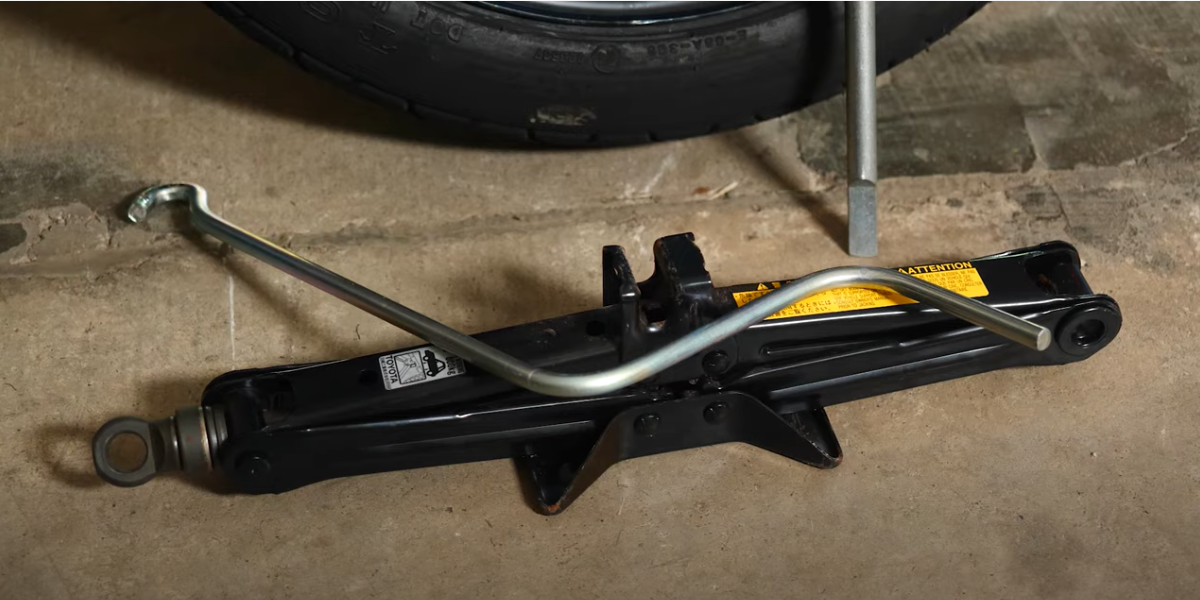
How to Change a Flat Tire
Step 1: Remove the Wheel Cover
- Once your car is in a safe location, and you have accessed the spare tire and tools, it’s time to remove the flat tire from your car.
- Start by removing the wheel cover or hubcap. A flat blade screwdriver or the flat end of your tire iron should do the trick. It can be used to pry off the cover.
- Depending on your model, your wheel cover may have a wheel nut or safety lock nuts to remove. Once again, your owner’s manual will be a great asset in determining what setup you have.
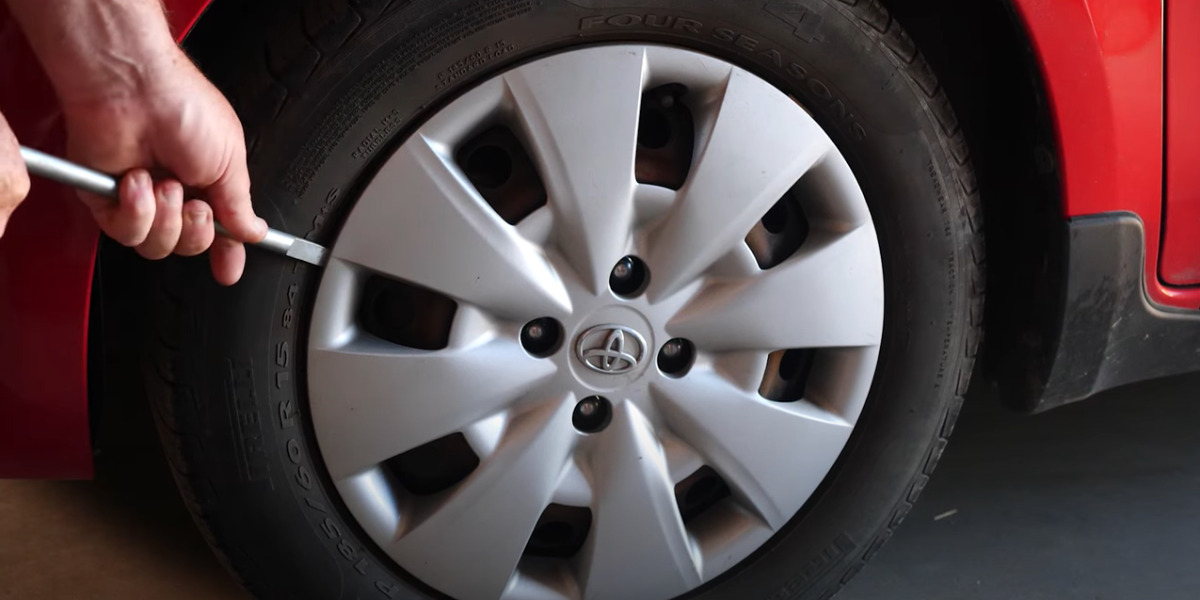
Step 2: Loosen Lug Nuts
- The next step is to loosen the lug nuts. This needs to be done before jacking up the car, as it will prevent the tire from rotating while you’re loosening the lug nuts.
- Once the lug nuts are loosened, the next step is to put the jack in position.
- There are typically two different styles of jacks: a bottle style or a scissor jack. With either version, they are placed under the frame of the car, then either a crank or lever is used to lift the vehicle. In our case, we will be using a scissor jack.
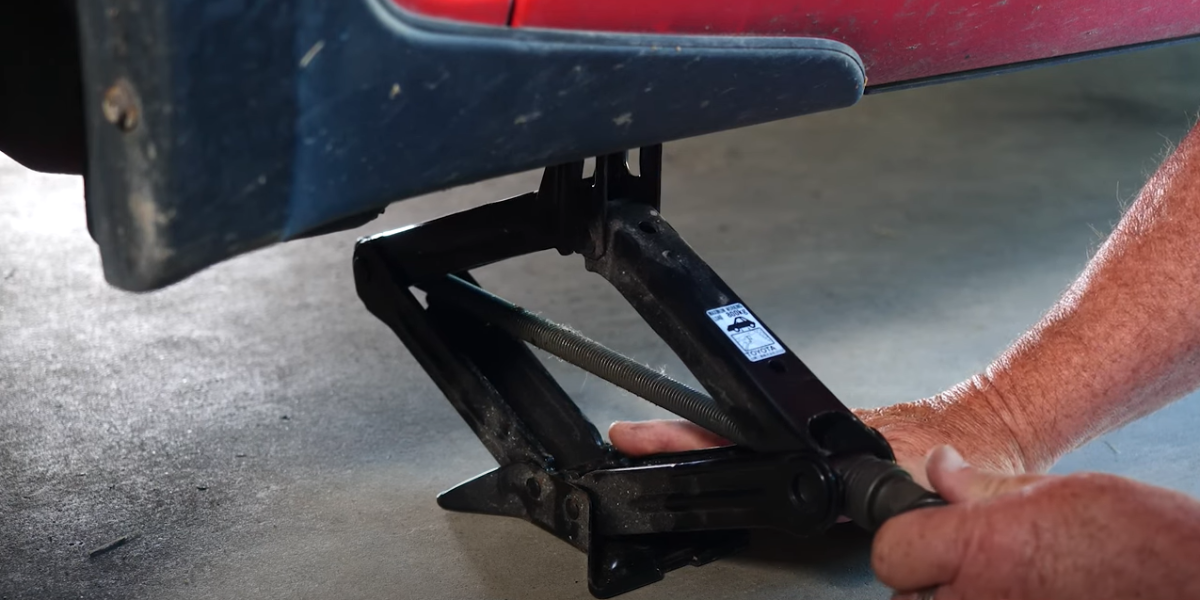
Step 3: Position Jack and Lift the Car
- Once again, refer to your owner’s manual to determine where the jack needs to be placed, and how the jack mounts.
- There are specific points on the frame intended for the jack to be placed in order to safely elevate the vehicle.
- Once it is in position, you can begin to raise the car until the tire is lifted just off the ground.
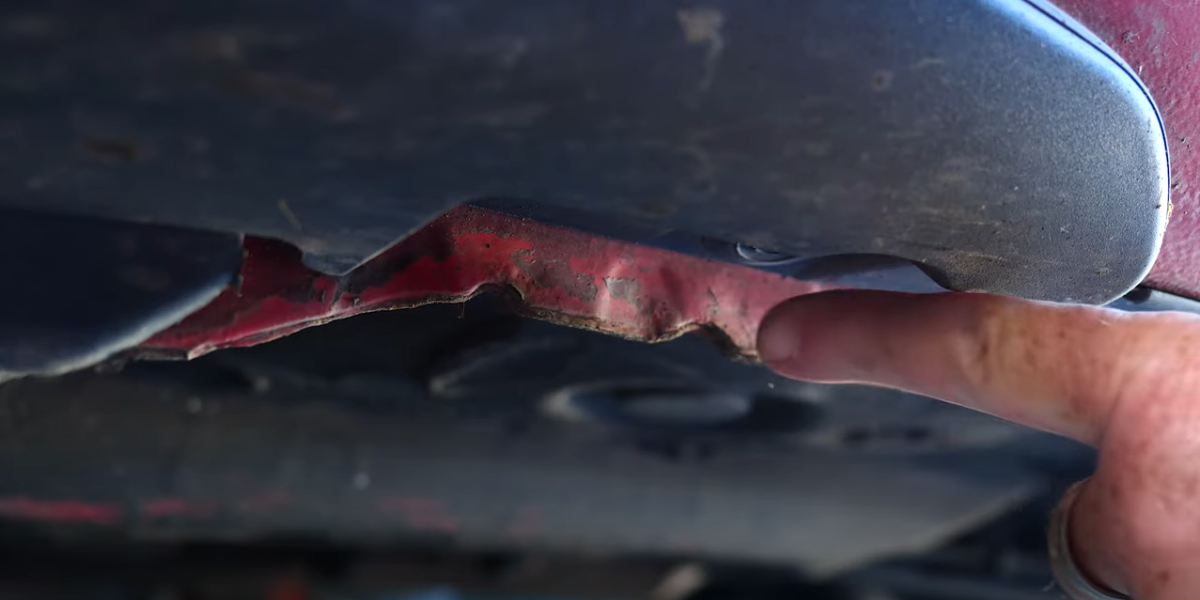
Step 4: Remove Lug Nuts and Tire
- Now that the tire is lifted off the ground, the lug nuts can be further loosened and then removed.
- Ensure that you, or anyone helping you, doesn’t have any body parts located underneath the vehicle while you’re working on the tire.
- Before you remove the final lug nut, keep a steady hand on the tire so that it doesn’t fall off, potentially causing harm.
- Then remove the damaged tire and place it to the side.
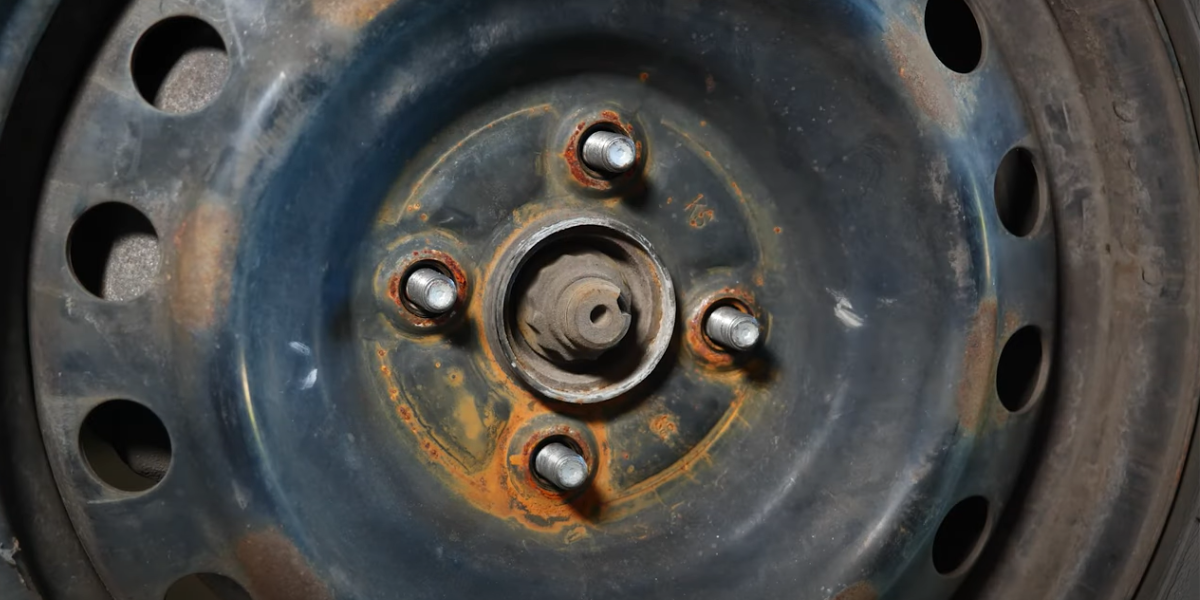
Step 5: Install and Secure the Donut
- With the flat tire safely removed, we can then reverse the process to put the spare on.
- Take the spare tire, line it up, and mount it on the lug bolts.
- With the spare tire in place, put the lug nuts back on and hand-tighten them.
- Tighten them up as much as you can by hand, then give them a quarter turn with the wrench.
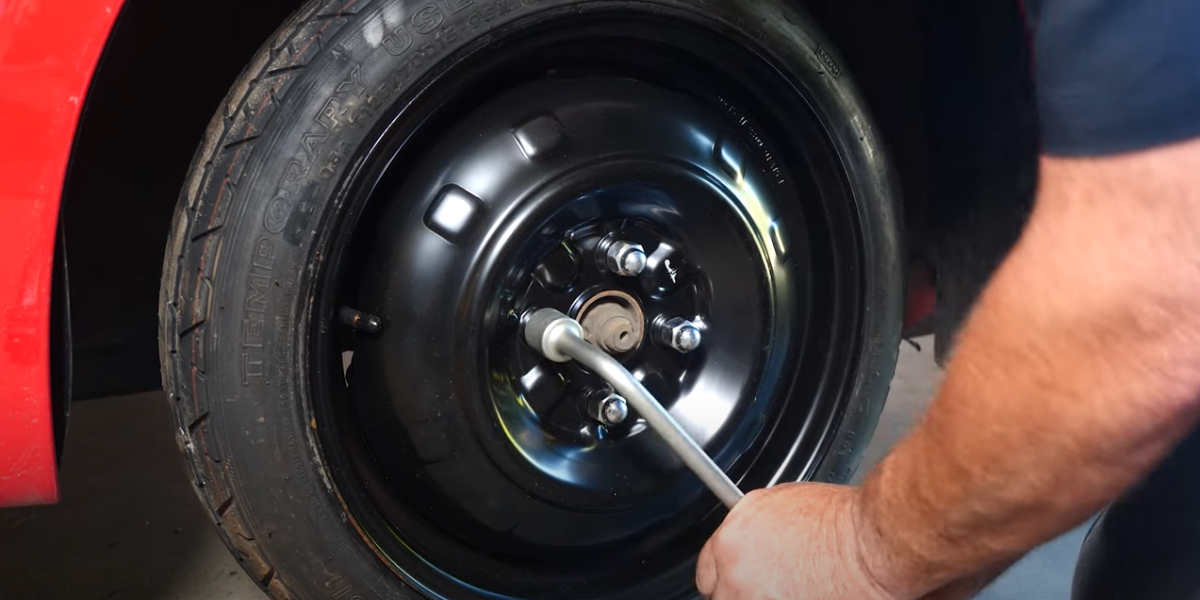
Step 6: Lower the Car and Tighten the Bolts
- Next is to lower the vehicle back down slowly to the ground.
- With the tire now touching the ground, tighten the lugs up with the wrench.
- Completely lower the car and remove the jack from underneath it.
- With the full weight of the car now being supported by tires, give the lug nuts another go with the wrench to ensure they’re tight.
- Pack up all your gear, and you’ll be all set!
The spare tire in your car is not designed to be a permanent addition but is there to help get you out of trouble. These tires aren’t meant for high speeds or long distances, so make sure you pull into the nearest service station. Once there, you can get your flat tire taken care of – either plugged or replaced entirely. A flat tire can be a stressful situation, but with the proper preparation and a well-equipped emergency kit, you will be fully capable of making it through!
